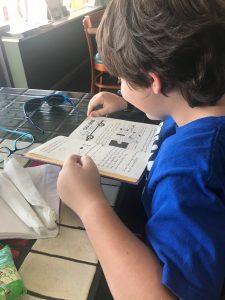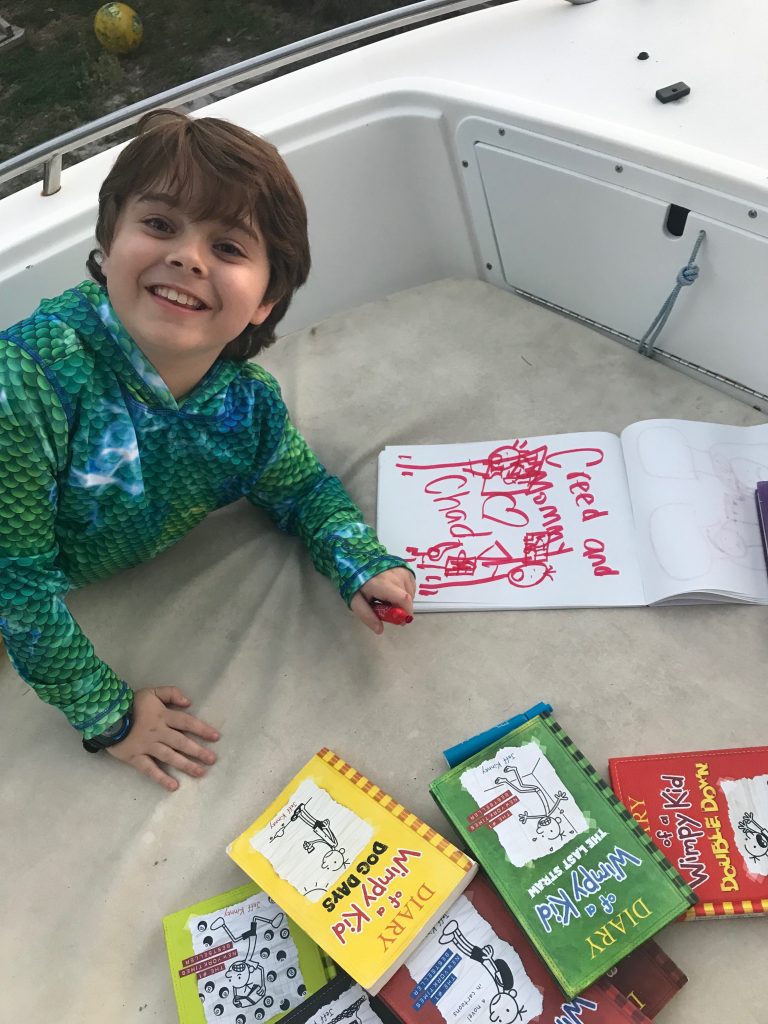Life After LUXTURNA: ‘Now He Can See’
This is the sixth in a series following the progress of Creed Pettit, a 9-year-old Florida third-grader, who completed treatment in March with the breakthrough gene-therapy drug called LUXTURNA™, approved as the first gene therapy for RPE65 genetic mutations and as the first-ever genetic therapy in the United States for an inherited disease.
Sarah St. Pierre Pettit’s life has been filled with lots of firsts these days as she watches her little boy literally see his world in a brighter light.
Before retinal surgery with LUXTURNA™, a ground-breaking, gene-therapy treatment, 9-year-old Creed needed very bright lights to see; post-surgery, he can see into a dark box, read books and discern crisper details in standard lighting.
One of the most unexpected differences to Sarah after her son’s surgery is his state of mind.
“I’m surprised at how much more relaxed he is,” the mom from Mount Dora., Fla., said. “That’s the biggest difference to me.”
Creed never was hyperactive, but his sense of relief and calm manifested as an unforeseen result of his revolutionary eye surgery.
“I think he’s relieved because the surgery is over and because now he can see,” she said. “He’s not so nervous about everything.”
Doctors diagnosed Creed with Leber congenital amaurosis (LCA) caused by a mutation in his RPE65 gene when he was nearing 3 years old in 2011 – the same time scientists at Spark Therapeutics worked to research and develop the innovative gene therapy that came to market as LUXTURNA™ in December.
The new drug is an injectable, human-engineered virus with copies of RPE65 to prompt the creation of more RPE65.
Creed’s surgery last month went well, though he had his issues with sticky things, even though he and his mother practiced at home with special tape from the doctor to get him used to the bandage he’d need over his eye afterward. He did well with the first patch because he mostly slept before it came off, 24 hours after surgery. The second wasn’t so easy. Creed didn’t sleep and obsessed about the patch, so taking it off was hard.
“As soon as it was off, he was happy. Everything was good again. He was ready to go.”

Creed reading the menu at his favorite restaurant, Mount Dora Pizza, without a flashlight or extra lamps.
Wednesday marked a milestone after Creed’s surgery, reaching what doctors call the 30-day peak, meaning 30 days after surgery on Creed’s right eye, his vision will have improved as much as it is going to from the treatment.
Creed met with Dr. Christine Kay of Vitreo Retinal Associates in Gainesville, Fla., Thursday to check his vision at this 30-day point. On Monday, which will be about a month from surgery on his left eye, he is scheduled to meet with Dr. Audina Berracol, his surgeon at Miami’s Bascom Palmer Eye Institute.
As Sarah awaits medical word on Creed’s level of vision improvement, she sees signs of great progress every day.
He no longer needs help keeping the handlebars straight when he rides his three-wheeled bicycle.
“He was so excited. He did awesome, looking right at me, smiling, and I’m thinking, oh my god, he’s gotta slow down.”
Creed also climbed onto to the wheel well of a boat trailer to get into a powerboat before settling in on a cushion to read and draw. Would he have ever done that before? “Heck, no,” Sarah said. “No way.”
Since he’s gotten back from Miami, Creed’s also gone to his favorite restaurant, Mount Dora Pizza, where he ate six, count ’em, six, meatballs.
He went back to school at Mount Dora Christian Academy on April 10th.
“He’s doing so good,” his mom said. “He’s right back into chorus. He didn’t want to miss chorus.”
Creed brought his usual lunch – peanut butter and jelly, a bag of cereal, a granola bar and three cookies. He was particularly impressed at lunchtime, though, when he clearly saw for the first time all the food choices in the cafeteria. While he still prefers to bring lunch, he realized students could get two side orders, rather than just one, with their main meal.
That first day back, as she does every school day, Sarah left a note in Creed’s lunch bag, telling him to have an awesome day, not to forget to do eyedrops after lunch and to wash his hands a lot to keep germs out of his eyes.
When she asked him how his first day back was, she said, “Typical Creed. ‘It was good.’”
Then he remembered something any third-grader would want their mom to know: “I saw a kid throw up.”
“A kid who’s sick,” Sarah mused. “This is what I get; I was expecting all these great things.”
The next day when she accompanied her son to school, Creed’s teacher, Mrs. Shyers, handed over a big box filled with all the lamps and bright bulbs that Sarah brought to school for her son to see better in the classroom, long before his surgery.
“He doesn’t need these,” Mrs. Shyers told Creed’s mom.

